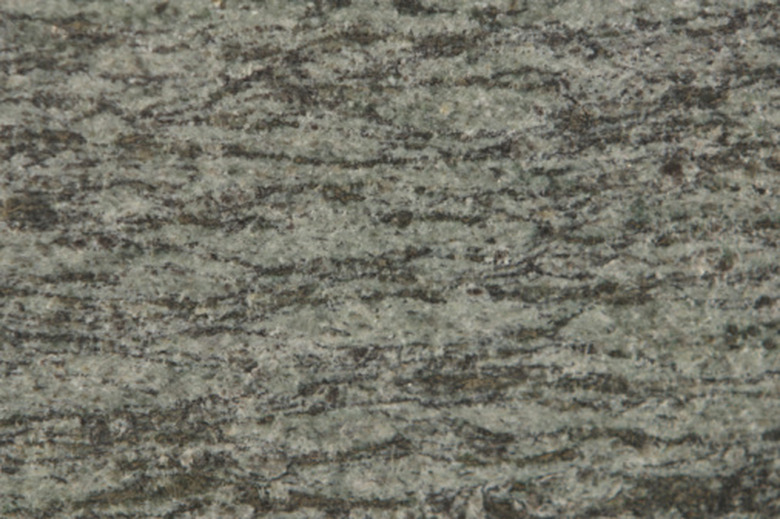What Are The Properties Of Igneous Rocks?
Igneous rock, also known as volcanic rock, is formed by the cooling of magma or lava. This type of rock is classified by cooling time and the type of magma it is formed from. The properties of these rocks vary greatly, including their chemical composition, grain structure, texture and color.
Igneous Rock
Igneous Rock
Igneous rock is produced by the melting of the Earth's crust into magma. There are two primary types of igneous rock: intrusive and extrusive. Intrusive igneous rock is produced by the slow cooling of magma below the surface. Extrusive igneous rock is produced by the rapid cooling of lava above the surface. In addition to cooling times, igneous rock is further categorized by the type of magma it is formed from, whether felsic, intermediate, mafic or ultra mafic.
Cooling Times
Cooling Times
The slow cooling of intrusive igneous rocks enables the growth of large mineral crystals within the rock. These crystals give intrusive igneous rock its coarse nature. Examples of intrusive igneous rock include granite, diorite, gabbro and peridotite. The rapid cooling of extrusive igneous rocks does not allow for the formation of crystallization, producing fine-grained, vesicular and glassy rock. Examples of fine-grained extrusive rock include rhyolite, andesite and basalt. The fastest cooling lava produces scoria, pumice and glasslike obsidian.
Felsic Igneous Rock
Felsic Igneous Rock
Felsic igneous rock is formed by magma that is dominated by silicon and aluminum. This magma is produced by continental crust, characterized by highly viscous magma or lava that is low in temperature and high in gas content. Additional mineral content includes potassium feldspar, sodium-plagioclase feldspar, quartz and biotite. When cooled, this rock is light in color. Granite is an example of slow-cooling felsic igneous rock. Rhyolite is an example of a fast-cooling felsic igneous rock. Pumice and obsidian are examples of very fast-cooling felsic igneous rock.
Intermediate Igneous Rock
Intermediate Igneous Rock
Intermediate igneous rock is formed by magma that has a composition between felsic and mafic. It is typically formed by subduction zones involving oceanic plates. The composition of intermediate rocks includes feldspar, amphibole, pyroxene, biotite and quartz. Diorite is an example of a slow-cooling intermediate igneous rock. Andesite is an example of a fast-cooling intermediate igneous rock. Scoria is an example of a very fast-cooling intermediate igneous rock.
Mafic Igneous Rock
Mafic Igneous Rock
Mafic igneous rock is formed by magma that is dominated by ferromagnesian minerals. This magma is typically found in oceanic divergent zones, characterized by fluid magma that is high in temperature and low in gas content. In addition to magnesium and iron silicates, mafic igneous rock may include other minerals, such as:
- calcium-plagioclase feldspar
- pyroxene
- olivine
- amphibole
Gabbro is an example of slow-cooling mafic igneous rock. Basalt is an example of fast-cooling mafic igneous rock. Scoria can also be formed by very fast-cooling mafic lava.
Ultra Mafic Igneous Rock
Ultra Mafic Igneous Rock
Ultra mafic igneous rock is almost entirely ferromagnesian in nature, with the addition of olivine. Peridotite is an example of a slow-cooling ultra mafic igneous rock. There are no forms of fast-cooling ultra mafic rock, and peridotite is rarely found on the Earth's surface.
Cite This Article
MLA
Bennett, Doug. "What Are The Properties Of Igneous Rocks?" sciencing.com, https://www.sciencing.com/properties-igneous-rocks-8528699/. 24 April 2017.
APA
Bennett, Doug. (2017, April 24). What Are The Properties Of Igneous Rocks?. sciencing.com. Retrieved from https://www.sciencing.com/properties-igneous-rocks-8528699/
Chicago
Bennett, Doug. What Are The Properties Of Igneous Rocks? last modified August 30, 2022. https://www.sciencing.com/properties-igneous-rocks-8528699/
